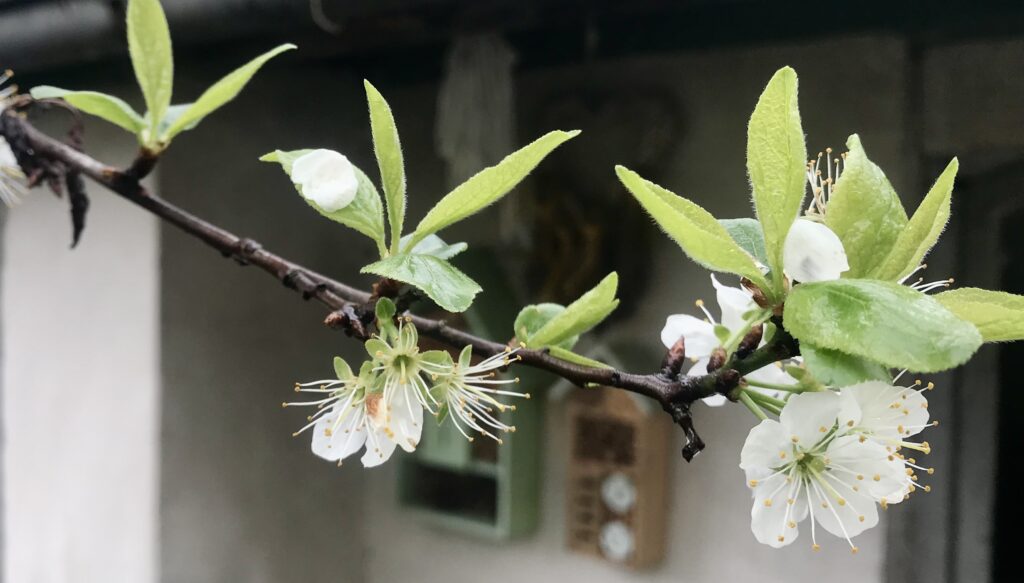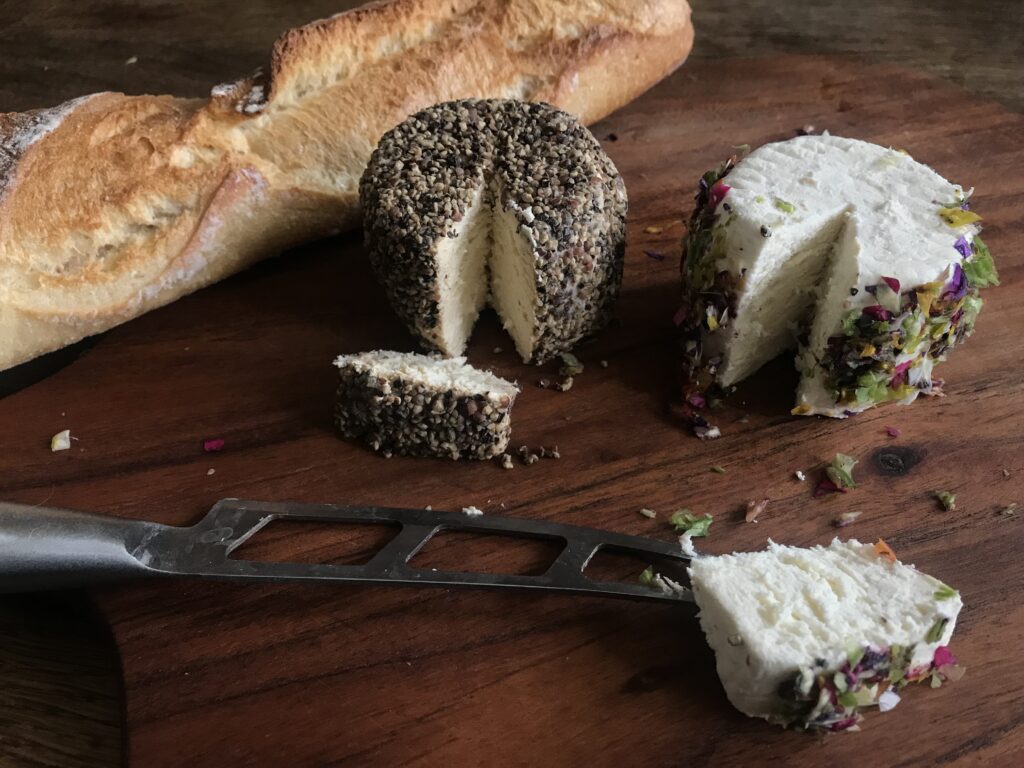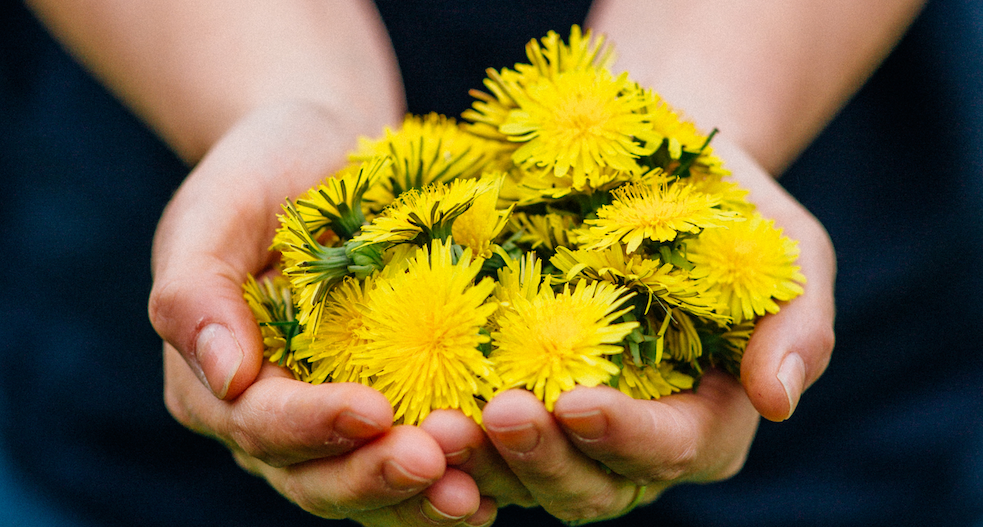(Editor’s note: This post on foraging is one in a series. You can read Alice’s post here about hunting mushrooms. You can read Pauline Lemaire’s post here about hunting truffles.)
It’s springtime! Here in rural France, it’s the kick-off for foraging season. Getting outside is a great excuse to ditch the daily grind; blow off the stressors of life. Just let go and listen. Can you hear the birds? Their warbling is like children’s laughter.
Feel the sun shining up your spirit?
In France, we don’t have to venture far to find this sort of peace. Most cities are surrounded with timberland. For those super-busy people, I’m here to kick-start you on your journey. You can simply forage for wild edibles in your own backyard. In just a few minutes you’ll get instant gratitude for finding a useful plant that you may have thought was just a weed.
Foraging has been around as long as humankind itself. I am a history buff, so it charms me to think that we have this tribal bond with ancient humankind. Forget the fad diet, this Paleo version is my way to go back 2.5 million years.
There I am out singing with the birds while I search the forest floor. I imagine my Cro-Magnon ancestors (visiting from their nearby home in the Dordogne). In my mind, they’re alongside me, picking dandelions, singing “Oh, Baby, it’s a Wild World.”
Okay, Cro-Magnon’s were around 45,000 years ago, but you get my drift.
Let’s start with the flower the French call “pee in the bed,” (yes, the name is for real). For you foodies out there, here’s your staple ingredient: the dandelion. You can eat the whole thing: petals, leaves, roots. Blow the flower’s stigma to watch its tiny parachuting seeds drift away. Just don’t blow in the direction of MY potager.
Children love it, and gardeners loathe it. I admit I dig ‘em up and eat ‘em before they take over my garden. Scroll to the bottom of this article for uses and recipes (and the backstory on the weird French name).

Call of the Wild
There’s just something about communing with your inner ancestor, even if it is only in your backyard. Now that I’ve trained my eyes to see them, I can spot edibles just by walking the dog. I get 10 times more stoked since all this food costs me nothing (especially during the current increase of food prices).
See those magnificent budding trees? Many of the flowers are edible and have the aroma of their respective fruit – some don’t even produce fruit that we would typically pick and eat but their buds still make for a tasty treat.
Like the redbud: I macerate the flowers in honey to spread it on crepes. Here in France, fruit trees bloom in sequence: redbuds, cherry, plum, pear, apple. Magnolia trees bloom about this time, too. Pick the whole flower and use it as a cup for sorbet. You can also do this with tulips from your garden.
It’s super easy and will impress your family and friends. I fill mine with lemon mousse and eat the whole thing, petals and all. Organic farmer and personal friend, Kris Ditta always says: Tulips are edible, remember it takes “two lips” to eat them.

Wild wood flower
This time of year, my friends start talking about a much sought after French forest herb called “l’ail des ours”, (pronounced LIE-days-orsze). In English, that’s bear or wood garlic. If you’ve seen the historical drama series “Outlander,” based on the novels by Diana Gabaldon, you might remember in Episode 103, “The Way Out,” two boys confuse bear garlic with the lethal “Lilly of the Valley.”
Don’t let that be you.
The toxic plant is called “muguet” in French and is traditionally given to loved ones on the first of May. Unfortunately, deadly toxicity happens. Just remember, every path has its puddle; and with foraging, do your research and be prudent. I put a reference for identification at the bottom of the story.
Oh, and if you have a dog, keep them on a leash when foraging. My dog ate wild garlic.
Lucky for me, she chose to eat the safe herb and not the deadly flower so all she had was dog breath instead of it being her last breath.
Now it’s time to put on your boots, grab a basket and head outside to have your own spring fling. What better way to spend an afternoon than to participate in a tradition as old as humanity itself. And remember what the tree said when it was finally springtime: What a re-leaf.
Mercy Mercy Me, the Ecology & Foraging tips
• Pesticides: Avoid farmers fields unless you have permission and confirm that fields and orchards are pesticide free.
• Toxicity: When hunting mushrooms, go with a certified mycologist. I go with Gracvie Vosges. The group’s mycologist is also an expert at identifying all sorts of edible plants. Read more here.
• Don’t gather near potentially polluted areas such as busy roadsides, streams with runoff from treated fields such as golf courses, crops, sewage treatment plants, etc.
• Wild Garlic: It is pretty simple to differentiate. Wood garlic flowers are star shaped. Still not sure? Pinch a leaf and smell it. Fragrance is garlic? You’ve got wood garlic.
Get started using your foraged food:
Dandelion: It’s diuretic, which is why the French call it “pissenlit” (literally pee in the bed). Use the leaves like spinach (sauté, salad, egg dishes). Flowers/Roots: tea, syrup, vinegar, wine, oil, coffee substitute.
For the gourmets out there: Pickle the compact green buds to use like capers or sauté in butter (taste like mushrooms). The wine from this flower is so popular there are books and songs about it. Here’s the recipe.
Check out this TikTok video on the complete process of digging and processing dandelions.
Redbud tree: If you miss the blooms, no worries; you can also use other parts of the redbud in recipes. Check out this video for more uses. Sources state that roots and bark have medicinal properties. Make tea from the twigs and flowers or try this redbud jelly.
Wild Garlic: Make pesto to add to soups, sauces, butter, garlic bread, sandwiches or chop it up fresh and add to salads. Here’s a recipe for an egg dish that utilizes rice paper (just substitute the wood garlic in lieu of the basil).
Identification tips: Both plants bloom white, but Lilly of the Valley’s flowers have bell-shaped clusters that hang down.

Foraged herbs and flowers can be incorporated into butter, mild cheese, infused into all sorts of liquids (vinegar, syrup, water), pressed into cookies or made into tea, jellies, preserves, candied, frozen into ice cubes and served in refreshing drinks and cocktails. I personally like to roll fresh goat cheese in chopped flower petals. It makes for a beautiful and simple presentation.
––––––––––
Read more about Alice’s expat life here.
Alice Verberne is a contributing writer for Dispatches Europe. She has worked in print journalism and magazine production in the United States and Europe throughout her career. She currently resides in France where she enjoys visiting former French speaking colonies and discussing history with the locals.















